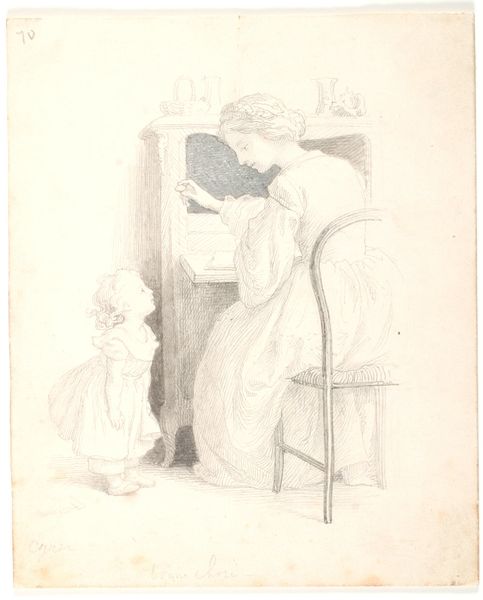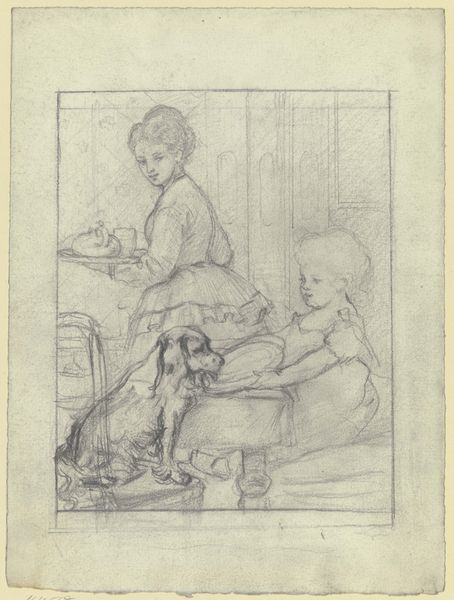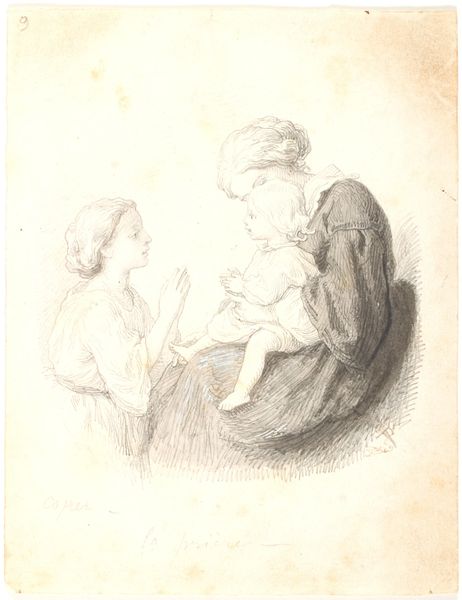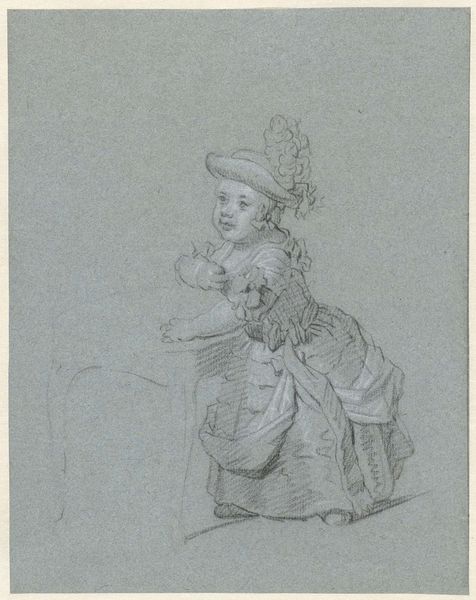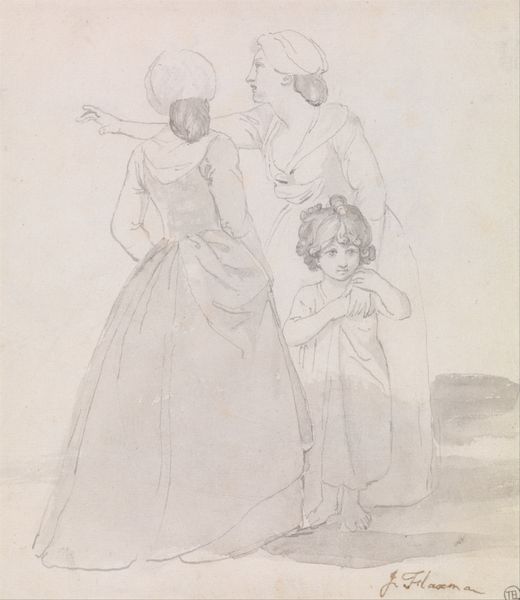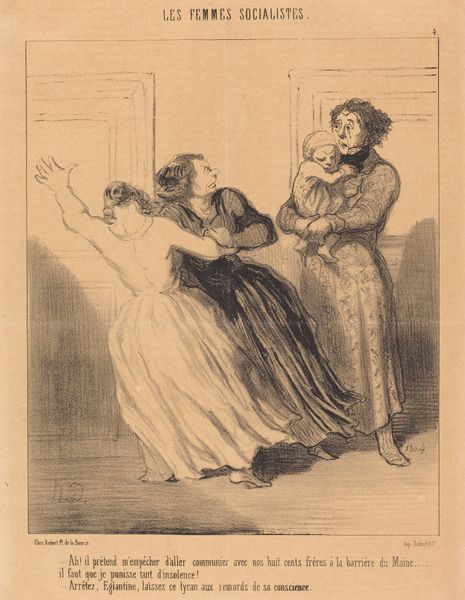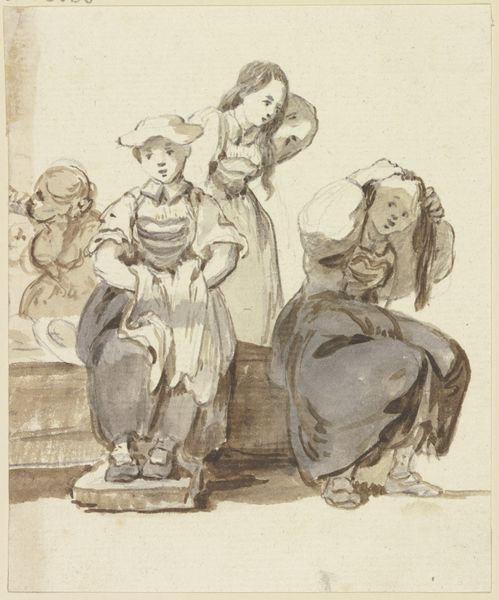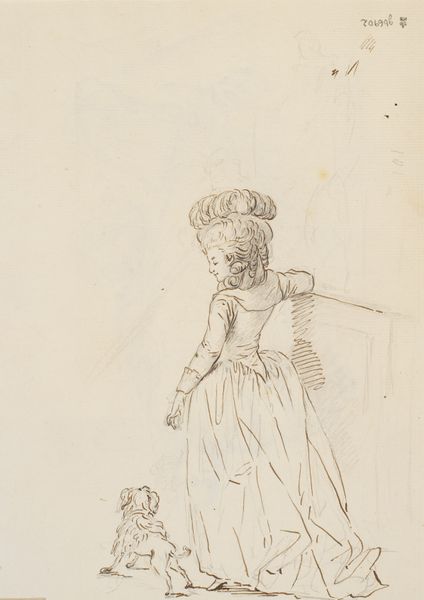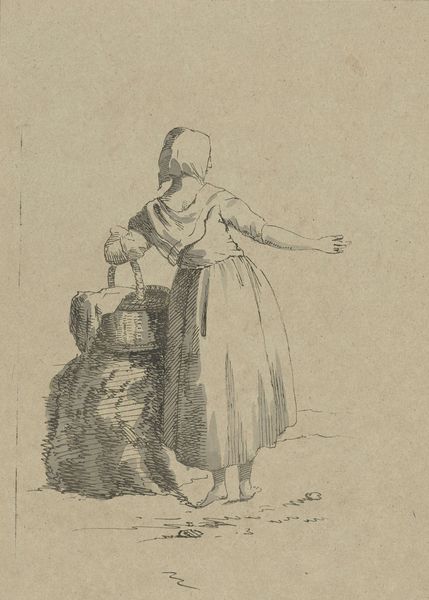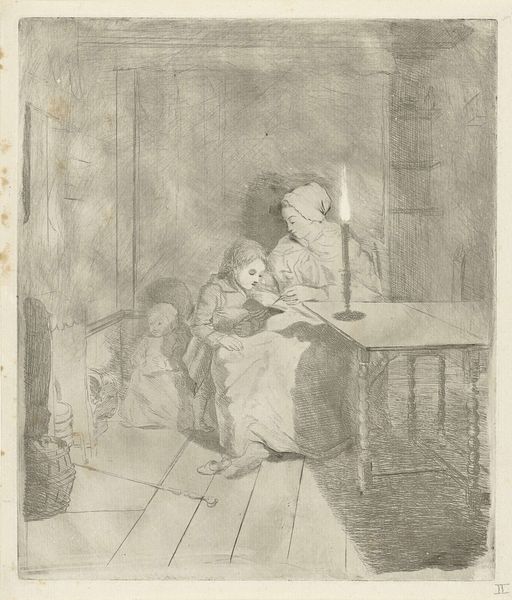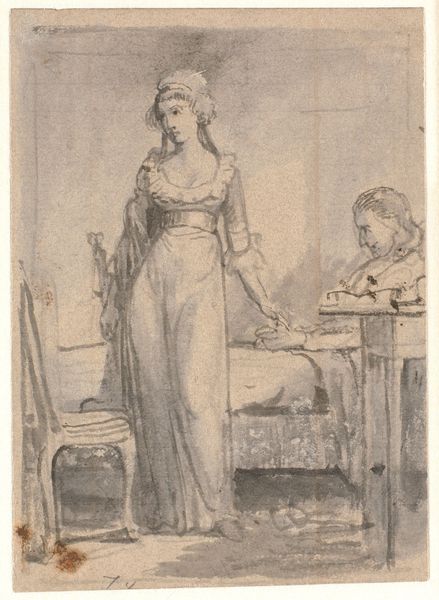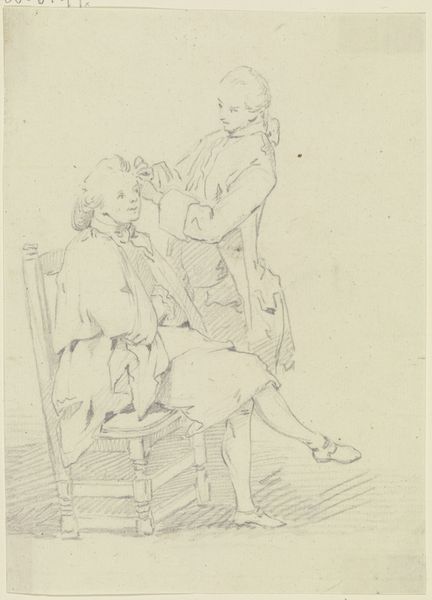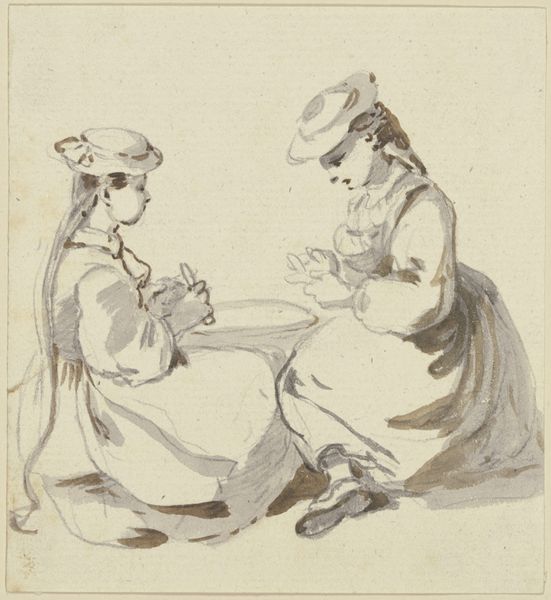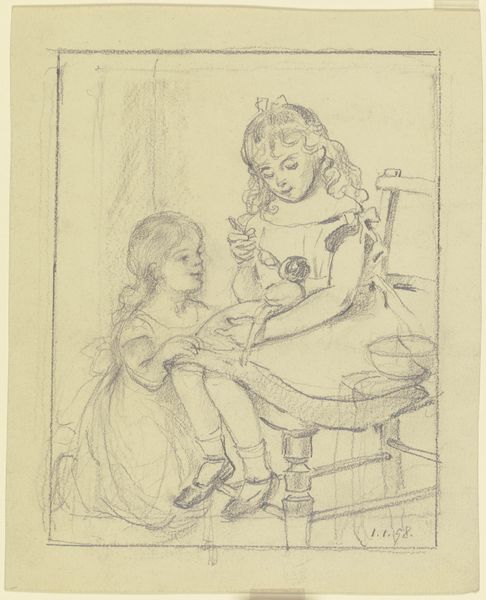
drawing, pen
#
portrait
#
drawing
#
imaginative character sketch
#
light pencil work
#
narrative-art
#
pencil sketch
#
figuration
#
personal sketchbook
#
idea generation sketch
#
sketchwork
#
sketch
#
sketchbook drawing
#
pen
#
pencil work
#
genre-painting
#
storyboard and sketchbook work
#
academic-art
#
sketchbook art
Copyright: Public domain
Editor: Here we have a pen and pencil drawing by John Flaxman, titled "Two Women Talking to a Man at a Counter." The lightness of the strokes gives the piece an ethereal, almost dreamlike quality. What catches your eye about the composition? Curator: The spatial arrangement is immediately apparent. Notice the stark contrast in how Flaxman delineates the figures. The man is confined, almost trapped, behind the strong, vertical plane of the counter. The women, however, are presented with a greater sense of openness and fluidity due to the draping fabrics. Editor: That's a great point. I hadn't considered the use of the counter as a compositional device, but I see what you mean. The textures in the women’s clothing create dynamic movement that’s absent from the static plane in front of the man. What effect does this choice of textures and composition have on how we see the subjects? Curator: Precisely. Flaxman's use of line weight is also critical. The women, especially the primary figure, exhibit darker, more defined contours than the man, who seems sketched with lighter strokes, almost fading into the background. This could suggest their dominance within this micro-narrative, their visual strength emphasizing a certain power dynamic. Editor: That's insightful. I focused on the implied narrative, but hadn’t fully considered how the formal elements reinforce the emotional undercurrents of the scene. The structural analysis sheds light on Flaxman’s intentionality. Curator: Indeed. By carefully considering the line, form, and composition, we access another layer of understanding and interpretation. Do you agree? Editor: Yes, absolutely. Considering the interplay between formal elements really changes the way I view the artwork. Thank you for the in-depth formal analysis! Curator: It's been a pleasure. A careful look at formal elements unveils meaning layered within artworks.
Comments
No comments
Be the first to comment and join the conversation on the ultimate creative platform.
